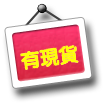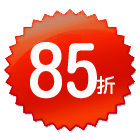序????????????????????????????????????????????????????????????????
一個字、一張畫 、一個故事
A character, a picture, a story
劉墉 Yung Liu
多半的人小時候學寫漢字,都覺得挺辛苦。
Most people who learned to write Chinese characters when they were young, remember it as a difficult task.
可不是嗎?拼音文字只要會說,大概就能八九不離十地拼出來。漢字卻一筆一劃左撇右捺,簡直像畫畫。不過順著這條路想,如果小孩學漢字的時候,都能用遊戲的心情去畫,不是很有意思嗎?
And difficult it certainly was! Alphabetic writing systems can be learned in a logical way; if you can pronounce it, you can probably write it. But Chinese characters are drawn one by one, stroke by stroke, like miniature paintings. Though it seems laborious, if we follow this line of thought and let children treat Chinese as a drawing game, wouldn’t it make the whole task of learning much more fun?
譬如先畫個框框,裡面再畫個個小女孩,是形容女娃娃的「囡」;框框裡面畫個人,那人則成為關在裡面的囚犯。
For example, first draw a box frame, then draw a little girl inside. That is the character 「囡」, which means “a little girl”. But if inside the frame you draw an adult person「人」, the character 「囚」means “a prisoner.”
兩扇門當中畫個太陽,是中間的「間」;換成一個人影,是一閃而過的「閃」。
The sun 「日」in the middle of double doors 「門」makes 「間」which means “between.” If you change that sun to a person, it makes 「閃」, meaning “a flash.” You can imagine a person appearing in the doorway in a flash.
月亮還沒下去,太陽已經從草坡上露臉,是黎明的「朝」;太陽不但落進草地裡,還落了又落,落下兩個太陽,是「暮」。
The moon has not disappeared, but the sun has already risen from beyond the grassy slope: that is the character “朝” which means “dawn.” When the sun not only falls into the grass, but continues to fall, appearing as two suns in a double image, it becomes “暮”, meaning “dusk.”
把「口」裡的東西吐到「土」上,是「吐」;從「天」上掉東西到「口」裡,是「吞」。
From the "mouth"「口」onto “earth"「土」makes「吐」meaning “to spit”; from "the sky"「天」into “mouth” makes「吞」, which means “swallow".
也有些字很抽象,譬如:上面寫個「中」,下面畫隻手,正好抓住上面「中」的那一豎,是必須公正執中、不偏不倚的「史」;上面寫個中,下面畫個心,是把良心放在最中央的「忠」。
Some characters are also abstractly expressive. For example, if you write “middle”「中」on top with a hand on the bottom grasping the vertical stroke of the 中, it makes 「史」which means “history.” A hand writing something that is “balanced and impartial,” that seems to suggest the ideal of historical writing. If you write「中」and put a heart under it, that yields the character 「忠」which means “loyalty.” You can think of it as “loyalty is where you put your heart at the center.”
往複雜一點看:草莽的「莽」,筆劃雖然多,其實很簡單:上面是草,下面也是草,中間一隻狗在跑,不是很荒野、很草莽嗎?
Let’s look at a more complex character, such as 「莽」. Although the character has many strokes, it is actually very simple when you think about it as a picture: there grass is above, there is grass below, and a dog「犬」is running between the grass. Is it not a very “wild,” “grassy” image?
還有跳蚤的「蚤」,好像挺複雜,其實只要畫一隻手,在手指間畫兩個像是跳蚤的小點子,下面再加個「虫」字,就成了。???? 至於流水的「流」,只要在左邊畫三點水,右邊畫個長頭髮,頭朝下的「子」,好像一個人在水裡游泳就對了!
There is also the character for flea 「蚤」, which seems quite complicated at first glance. In fact, just draw a hand and two small dots like fleas between the fingers, then add the radical for insect 「虫」below, and there you have it! As for the character "flow" 「流」, draw three splashes of water on the left side, three strokes resembling long hair on the right side, and a "child" 「子」with his head down, as if swimming in the water.
以上都是這本書裡介紹的漢字,它們經過我挑選,讓小朋友和初學漢字的外國人,能夠很快進入漢字的王國。這個入門非常重要,一個人如果從起初就用圖畫的方式學習漢字,可以影響他一生。因為死記硬背學的漢字是死的,從圖象入手學的漢字是活的。好比你新認識一個人,起初只知道他的名字,但是如果有一天,那人邀請你去他家,你知道了他的家庭背景,甚至人生遭遇。下一次再見到他,他雖然還是那個樣子、還叫那個名字,但在你心裡感覺卻變得「親切」了。
These are the Chinese characters introduced in this book. They have been selected by me so that children and foreigners who are learning Chinese can quickly enter the land of imagery and imagination. This entry is very important. If a person learns characters this way from the start, it can influence the rest of the learning process. Chinese characters that are rote memorized are dull, but Chinese characters learned from imagery come alive. It’s like getting to know a new friend. At first you only know his name, but if one day, the person invites you to his home, and you learn about his family and his life story, next time when you see him again, even though he still looks the same and you call him the same name, he will feel "friendly" to your heart.
這本書是我和兒女合作的。兒子早年到美國才小學一年級,女兒則是美國出生,為了讓他們不忘本,我堅持教他們中文。兒子因為已經在國內學過一年,還好教些,女兒就難了,因為她生長在美語環境,為了讓她不排斥學漢字,我不得不設計一套「從圖畫到剪影到文字,外加生活照片」的方式。而且為了讓她知道漢字是怎麼演變成今天的樣子,我會把甲骨、大篆、小篆、隸書、行書和楷書都寫給她看。又為了確定她懂了,我在用中文解說之後,總要她翻譯成英文,並且鼓勵她說:將來可以出書。
This book is a collaboration with my children. My son Xuan lived in the United States since his early years, and my Yvonne daughter was born there. In order to educate them on their roots and culture, I insisted on teaching them Chinese myself. My son had his early education in Taiwan, so he already had the fundamentals, but my daughter was a different story. In the American environment, for her to accept learning Chinese characters, I had to design a system that taught her the characters as a set of pictures, from drawings to sketches to text, with the addition of photos from real life. And in order to let her know how Chinese characters have evolved into what they are today, I wrote out the oracle bone, big and small seal, clerical, semi-cursive and cursive versions of the scripts, all the way to the present-day regular script. And to make sure she truly understood, I always asked her to translate my explanations into English. I even encouraged her efforts by saying “one day, we can publish this as a book!”
二十多年後的今天,我的諾言終於實現了。因為女兒翻譯的時候年紀小,英文比較幼嫩,我還請劉軒作最後的校正,藉機會讓兒子又學了一次。太太則擔任中文校對和跟出版社的聯繫工作,真可以說是全家聯手的產品。
Today, more than twenty years later, my promise has finally come true. Because Yvonne was younger when she did the original English translation, I also asked Xuan to make the final edits. He said it was a good opportunity to refresh the material. My wife Weiwei did the proofreading and corresponded with the publishing house. It was a true family effort.
這本書的編輯工作,主要是我今年暑假在臺北完成,為了找到能夠配合的照片,我常常不得不頂著烈日出去拍攝。正在澳洲度假的兒子和在紐約工作的女兒,也被我隔海催稿,我們並決議把在台首版版稅全部捐作公益,以謝謝讀者幾十年來對我們的愛護!
The editorial work of this book was mainly done in Taipei this summer. In order to shoot suitable photos for the characters, I often had to venture out with my camera in the hot noon sun. My son who was on vacation in Australia, and my daughter who is working full time in New York, have also been “drafted” by me on short notice to complete this manuscript. Finally, we have decided as a family to donate all the royalties from the first Taiwan edition for social benefit, as gratitude for the many years of love and support we have received from readers like you. Thank you all!
?
劉墉 二零一八年七月
Yung Liu, July 2018

